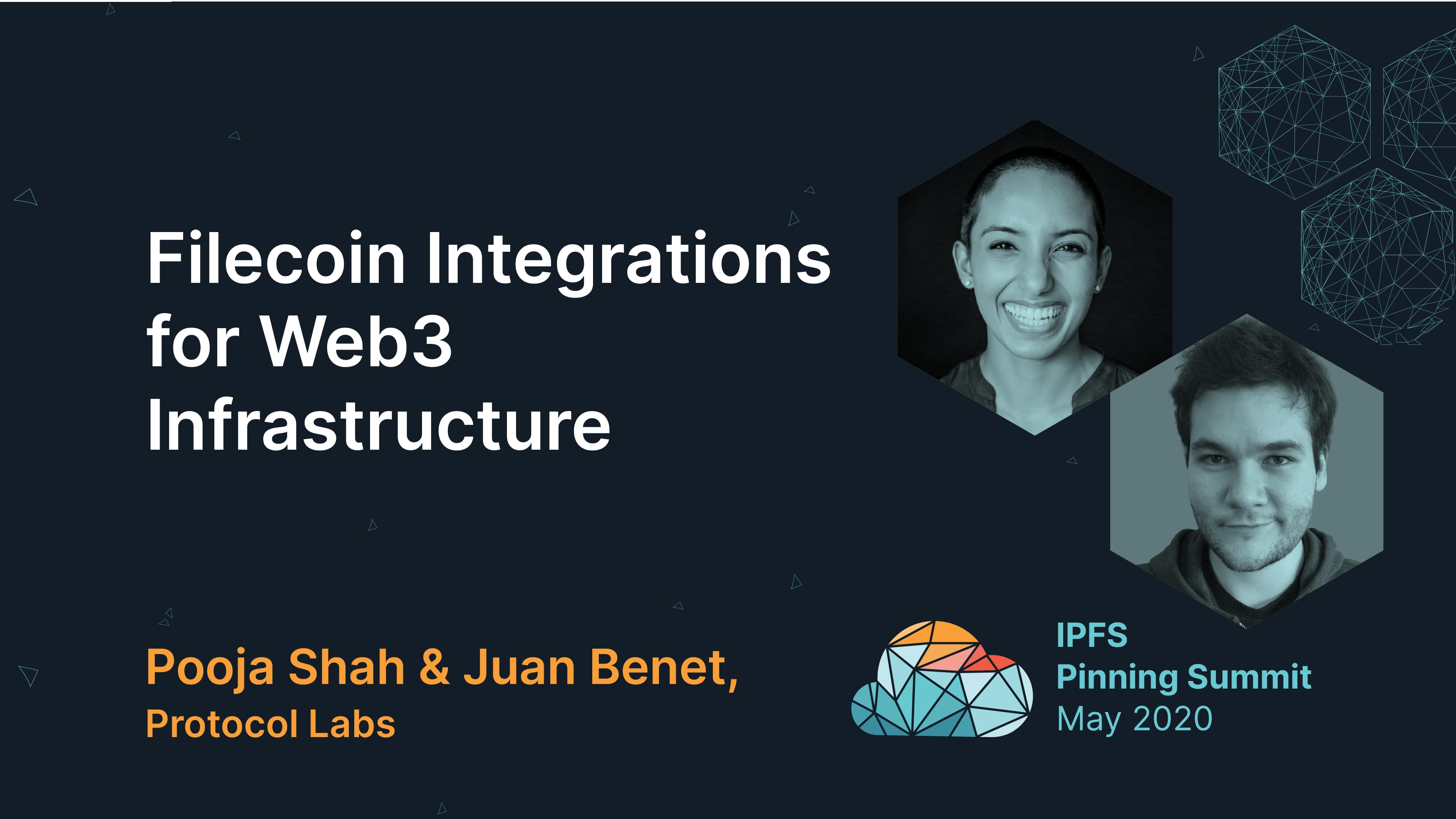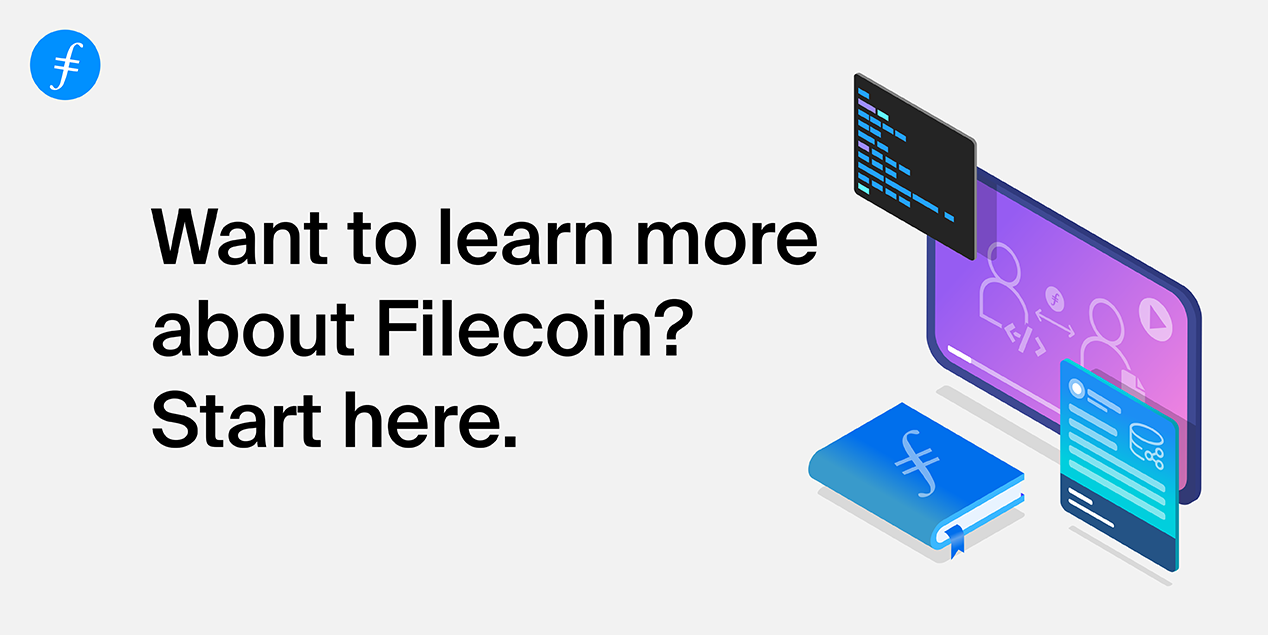Just in time for back to school, we’re here to get you up to speed on all things Filecoin. The following “syllabus” of instructional videos and materials covers all aspects of the Filecoin network – from mining to storage to application development. This resource is designed for anyone interested in learning about the history and development of the network, as well as how to leverage the network at all levels: mining, building, and storing.
Filecoin Fundamentals

History of the Filecoin Project and Filecoin’s Juan Benet: The Vision for Web 3.0
Protocol Labs Founder and CEO Juan Benet joined the teams at ZeroKnowledge and CoinDesk to talk about the history and future of Filecoin, IPFS, and Web3. These two interviews offer perspective on the Filecoin project, including how it has evolved since its inception and where it’s headed.
Length: 2 hoursSupplemental Materials:
- Building Web3 (2019)
- Long Term Info-structure | Juan Benet
- Intro to Web3 and Protocol Labs
- ProtoSchool: Decentralized Data Structures
This workshop is a conceptual overview of how Filecoin works, including background on the project’s mission, a spec system overview, the key players in the network, and an overview of the Web3 ecosystem.
Length: 2 hoursSupplemental Materials:
- Watch the 3D Filecoin Explainer (click “Explore the Filecoin vision”)

In this session, Filecoin Software Engineer Łukasz Magiera explains how to mine on the Filecoin Network, walking through key concepts including storage sectors, storage proofs, and mining power. He offers a high-level overview of the network’s architecture and covers how to set up a mining node.
Length: 1 hourSupplemental Materials:
- How to mine on the testnet
- Troubleshooting mining issues
In this Zoom presentation, the Filecoin team discusses the mechanisms and models presented in the recent report Engineering Filecoin’s Economy. The team also discusses a number of questions submitted by the community.
Length: 2 hoursSupplemental Materials:
- Introducing the Filecoin Economy
- Engineering Filecoin’s Economy
The Filecoin Ecosystem

Filecoin Integrations for Web3 Infrastructure
Filecoin presents many promising business opportunities. This session explores a few key Filecoin integration opportunities for pinning services and other businesses looking to integrate Filecoin.
Length: 1 hourSupplemental Materials:
- IPFS Docs: Persistence, permanence and pinning
- What is an IPFS Pinning Service? (Pinata explainer)
- Filecoin Docs: Filecoin-backed pinning services
- Developing on Filecoin (video)
Using Lotus to connect to the Filecoin network
Lotus, the reference implementation of the Filecoin protocol, is your path to connecting to the Filecoin network and interacting with your peers! In this interactive workshop, we’ll go over the architecture of Lotus, walk through installing Lotus and syncing the blockchain, and examine how you can explore Filecoin’s functionality through the Lotus node.
Length: 1 hourSupplemental Materials:
- Filecoin Docs: lotus and go-ipfs interactions
- How to set up the lotus and go-ipfs API clients
Textile’s Tools for the Filecoin Network
Textile provides a suite of open-source tools that provide a decentralized database, IPFS-based storage, content hosting, and more, over libp2p, IPFS, and Filecoin. This workshop covers how to use Textile’s Threads, Buckets, and Hub tools to build apps for the Filecoin network (focus on JavaScript). The session includes an introduction to Textile’s suites of tools, basic command-line (CLI) actions, and Textile’s JavaScript Client(s). To prepare, we encourage you to install a few things before we get started:
- Install the Textile Hub command line interface (CLI) on your computer (so that you can connect to Textile’s Hub via the Hub CLI tools).
- Set up Node.js on your computer
Supplemental Materials:
- Textile Bucket Archiving
- A protocol & event-sourced database for decentralized user-siloed data
- Want to try Filecoin? Textile is building tools to make it as easy as 123
- Developer Tutorial: Simple Pinning Service Demo
- How to build a Meme Marketplace using React, Textile Hub, and MetaMask
Textile’s Powergate is an API-driven solution for deploying multitiered storage across Filecoin and IPFS. Persistent storage on Filecoin allows rich storage configuration for data, such as replication factor, miner selection, deal renewal, and repair. Network available storage is configurable and provided through a connected IPFS peer or pinning network.
Length: 35 minutesSupplemental Materials:
- Filecoin Docs: Powergate
- Filecoin Docs: How to build a simple pinning service using Powergate
Slate is a storage application and Filecoin network client that lets you store images, audio, video, and data through a graphical interface or API. Developed by Jimmy Lee, it’s built on Textile’s Powergate and Buckets. Part one of this course shows how Slate works at a high level. Part two shows you how to Build on Filecoin using the Slate API.
Length: 2 hoursSupplemental Materials:
- Slate GitHub Repo
Building decentralized apps using Fleek’s Space Daemon
Fleek’s Space Daemon is an open-source file storage, sharing, and collaboration platform built on the distributed web. It’s a private, encrypted, p2p version of standard storage tools like Dropbox or Google Drive. This session, led by front-end Web3 developer Samuele Agostinelli, will explain how to build decentralized apps using Space Daemon.
Length: 1 hourSupplemental Materials:
- Fleek documentation
- IPFS Case Study: Fleek
Extra Credit! Filecoin Features
- Distributed Randomness & Leader Elections
- Filecoin’s Proof System
- Tipsets - A closer look at Filecoin building blocks
- Filecoin’s Verifiable Storage
- Offline Data Transfer for Large-Scale Data and Preserving Critical Data with Filecoin Discover
- ProtoSchool: Anatomy of a Content Identifier (CID)
- How to build a Filecoin Network Inspector using React, lotus, and go-ipfs
- Protoschool’s Verifying Storage on Filecoin
